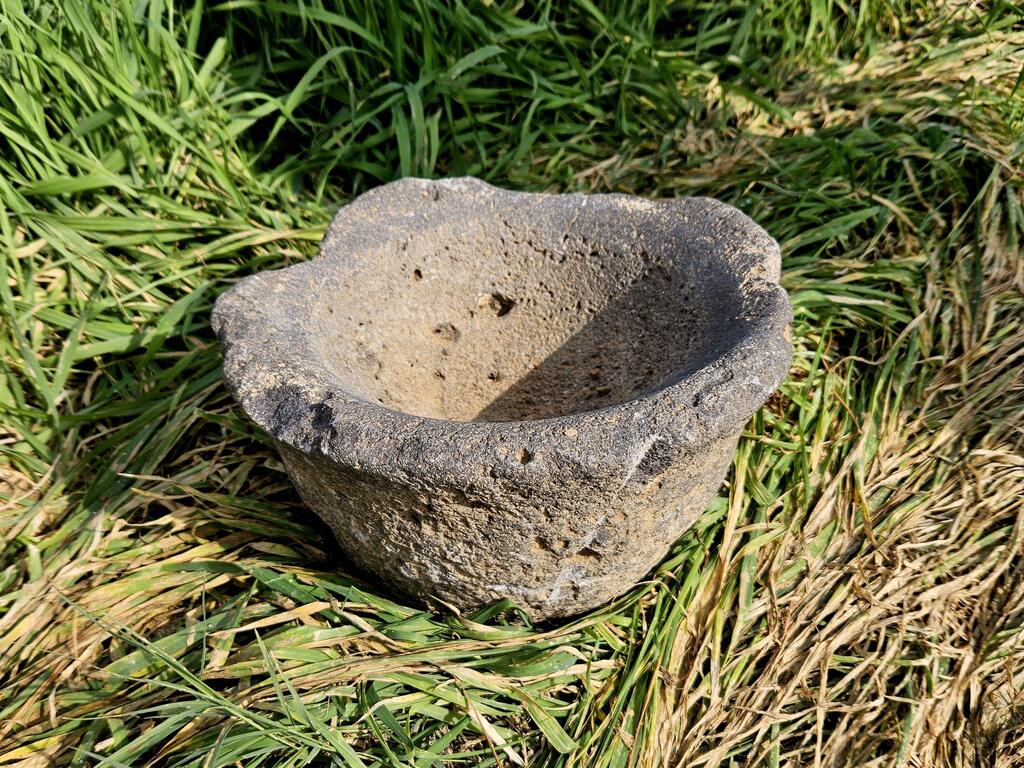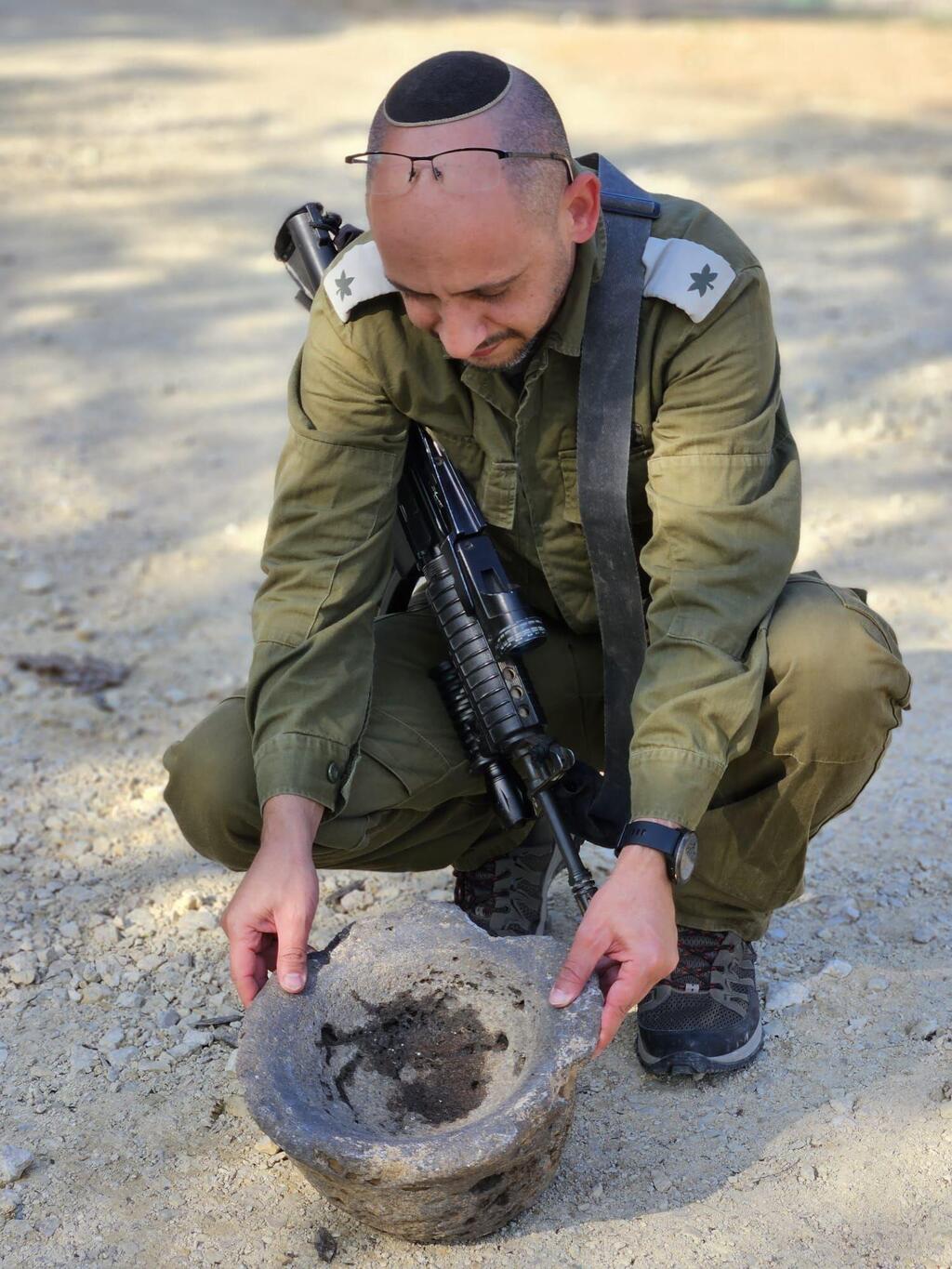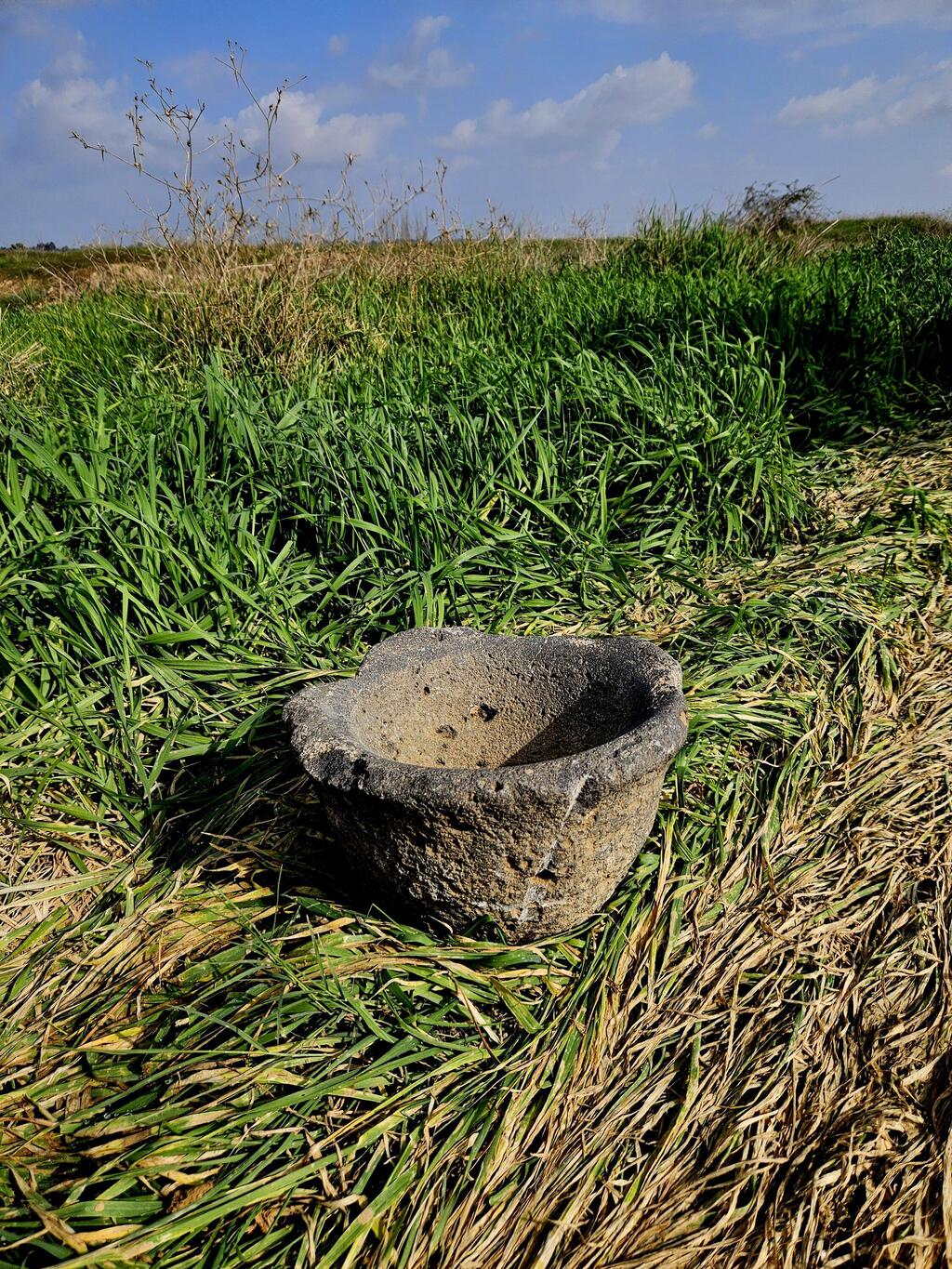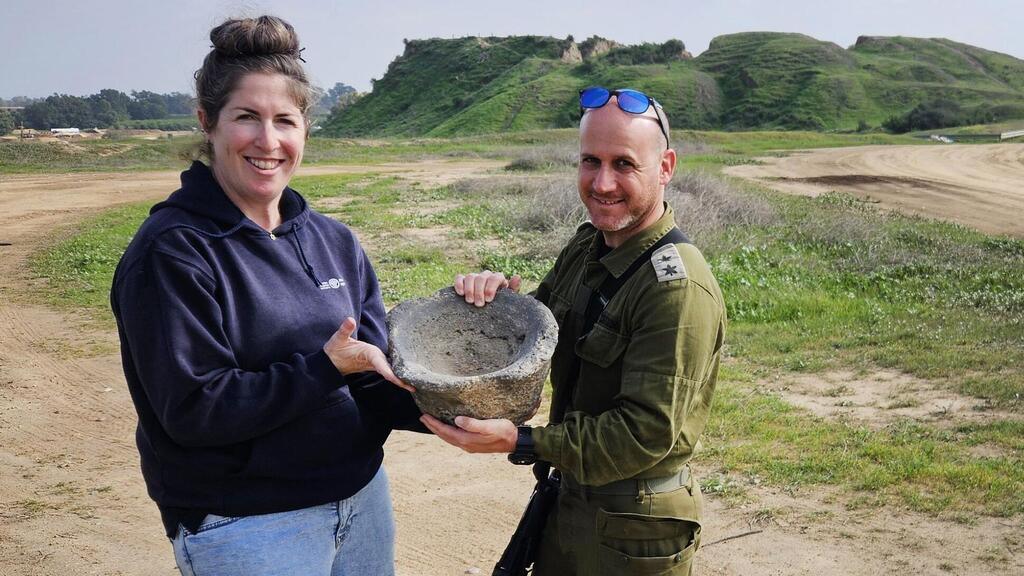IDF reservists keep uncovering ancient artifacts along the Gaza border. Following the recent discovery of a Byzantine oil candle, soldiers have now found an ancient millstone. One of the reservists, who is also an archaeologist with the Israel Antiquities Authority, has handed over this significant find to the state for preservation.
Read more:
Lieutenant Colonel Yair Amizur and Major Eliashiv Bohbut discovered the basalt stone tool, weighing more than 10 kg. "As part of the routine field patrols around the Gaza border, our eyes caught a protruding round basalt block from a pile of earth on the side of the road," Major Bohbut recalled. Amizur, an archaeologist with the Israel Antiquities Authority, immediately recognized that it was a millstone - an ancient grinding tool."
4 View gallery


IDF finds ancient millstone used for grinding wheat
(Photo: Sara Tal, Israel Antiquities Authority)
Lt. Col. Amizur added, "Basalt is known to us from the north of the country or other remote areas. In light of this, it is clear that the tool we found was brought here from afar, and was probably used in the past in the home of one of the residents of the area to grind grain or other products - an action that was done with the help of a heavy pole, called an ali."
4 View gallery


Maj. Eliashiv Bohbut with the millstone
(Photo: Yair Amizur, Israel Antiquities Authority)
According to him, "We were excited to suddenly receive a greeting from the past and to deal with good news for a change. The instrument reminds us that throughout the generations, the Western Negev served as a significant settlement area, where a variety of cultures settled. Wars have also occurred here in the past, but in the end, settlement always returned and the area flourished again. We are sure that, as in ancient times, so today too we will recover from the disaster that befell us and return to settle the Western Negev, and the settlement will prosper and flourish."
The Israel Antiquities Authority said that millstones like the one found were typically used for grinding dry goods such as grains and lentils. These crushing tools, essential for producing flour—a popular staple, were common in households. Meanwhile, in industrial areas, millstones were employed to grind flour in larger quantities.
4 View gallery


Ancient millstone found in Gaza border area
(Photo: Sara Tal, Israel Antiquities Authority)
The two reserve officers showed exemplary citizenship, and returned the artifact to the state at the Israel Antiquities Authority so that it could be properly preserved. The two also received a certificate for demonstrating good citizenship. "We are doing important work here, but I look forward to the days when I can return to doing archeology full-time," Lt. Col. Amitzur concluded.
Sara Tal, Western Negev archaeologist at the Israel Antiquities Authority, collected the find, which will be transferred to the state treasures at the Israel Antiquities Authority. "The grinding tool has been preserved in an extraordinary way. Such tools were used in a variety of periods from the biblical times to the Mamluk period," she said.
4 View gallery


Lt. Col. Amizur with Sara Tal from the Israel Antiquities Authority with the millstone
(Photo: Elon Glick)
"The war brings us together with extraordinary situations also on the archaeological front," said the director of the Israel Antiquities Authority, Eli Escusido. "The Land of Israel - and in particular the surrounding area, are saturated with history and ancient findings, and the Israel Antiquities Authority cooperates with the IDF in order to preserve them even in circumstances of war."
"In this case, we were fortunate that one of our employees, an archaeologist serving in the reserves, identified the ancient find and knew how to proceed, but I would like to remind you that in the case of finding an ancient find, it is important to leave it in its place and call the inspectors of the Israel Antiquities Authority to the location so that the researchers will be able to extract as much information as possible from the find on the site where it was discovered," he said.


